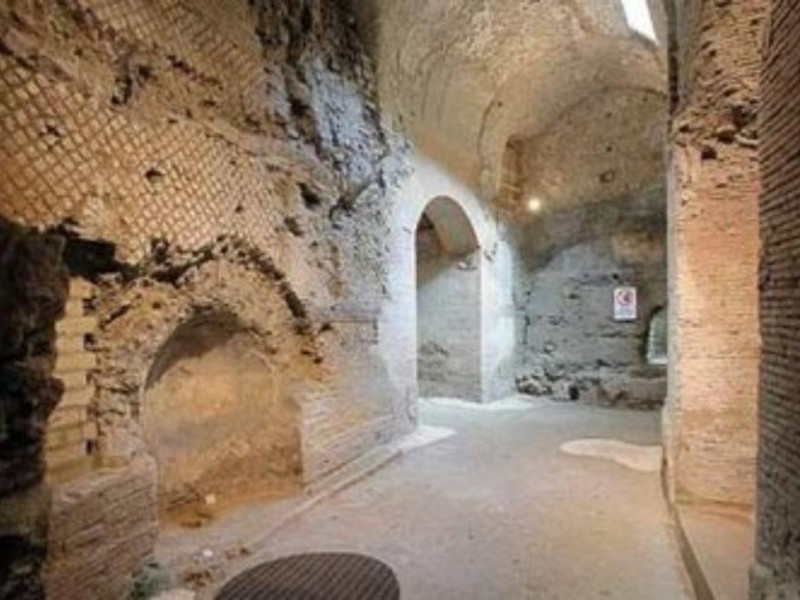Teatro antico di Neapolis
The topography of Neapolis theater togetherto Odeon occupies the northern part of the Forum, to the north of the Temple of Castor and Pollux now surmounted by the church of San Paolo Maggiore, in modern blocks away between Anticaglia, via St. Paul to the Courts and Giant alley. If dell'odeion few remains are known, the theater of the Roman period is better known, mentioned by ancient written documents and probably represented in works of art of the fifteenth and sixteenth centuries. The building, constructed in opus reticulatum and mixtum of latericium is now visible in the appearance date between the late first and early second century AD , During which time it was completely rebuilt after the earthquake of perhaps 62 or 79 AD eruption In the theater of the Roman period there is no trace of the building for performances of the Greek age, nor of the early stages of the Roman age. The theater was abandoned around the middle of the fifth century AD, when they changed the functions of the site; later parts of the building were occupied by nuclei public burial, attributable to the sixth and seventh centuries AD, while others were obliterated by massive accumulations of arable land. The archaeological monument built in effects a significant example of "urban archaeologists" through which it is possible to reconstruct the building history, from ancient times until the modern era, an entire urban area of Naples. After a few accidental discoveries occurred in 1859, which allowed you to draw a first plan of the building, the first excavations carried out between 1881 and 1891 led to the discovery of part of the auditorium in the garden of one of the houses overlooking the decumanus (the ancient road) top of the city. As a result, investigations using scientific methods have allowed in 1985 to accurately detect and isolate the walls from the Roman period between the modern and therefore, since 1997, to explore the area in the meantime buy the Public State Property. With new systematic excavations were brought to light some parts of the ambulatory external and internal, with niches and a complex system of channeling water, with its wedge support and vomitoria (hits), which led to the bleachers the media cavea (the middle part) of the stands, as well as part of the scene with the intent to return the monument to public use, as part of an overall program of promotion of the entire urban sector. No less important are the survivors decorated surfaces: from the floors of the ambulatory internal plasters, some of them with interesting graffiti inscriptions, the marble facing of the steps of the auditorium. In subsequent work is expected to extend the survey to even scenae front (stage building) where they carried out the plays, also celebrated in the ancient sources.




